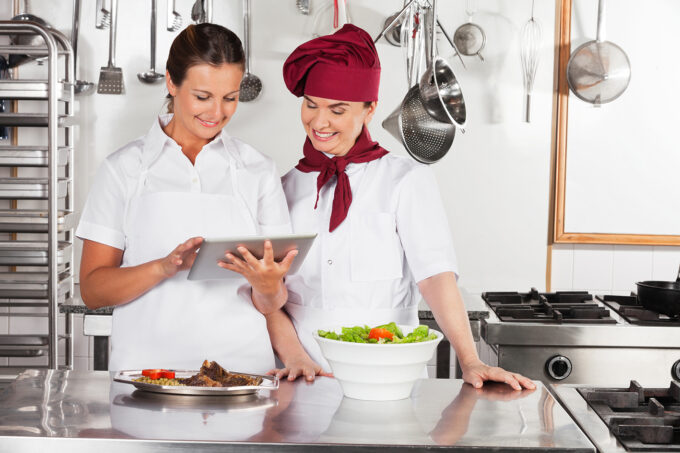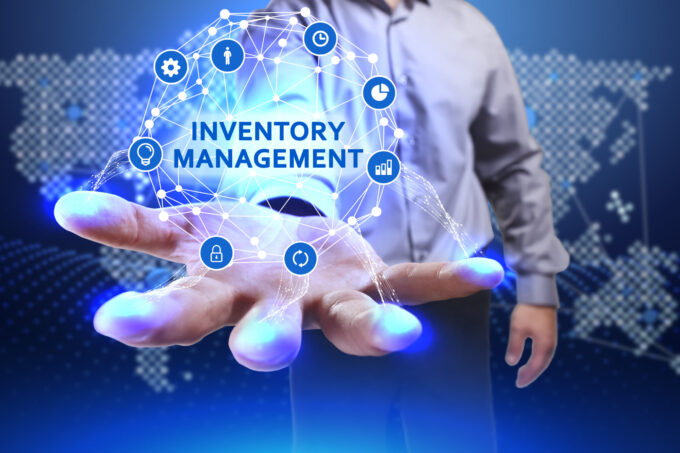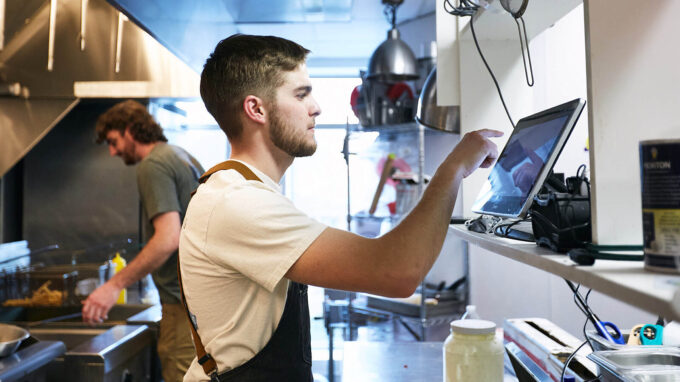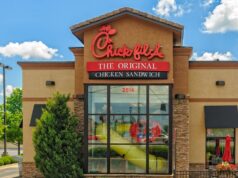In today’s fast-paced restaurant industry, efficiency is key to success. With the advent of advanced technology, restaurant management platforms have revolutionized the way kitchens operate and orders are managed. These cutting-edge tools streamline processes, enhance communication, and optimize overall efficiency, leading to improved customer satisfaction and increased profitability.
According to a report by Grand View Research, the worldwide market for restaurant management software was valued at approximately USD 4,556.4 million in 2022. It is anticipated to exhibit a CAGR of 16.3% from 2024 to 2030. The expansion of this market can be attributed to the rise in the number of restaurants globally and the growing adoption of Quick Service Restaurant (QSR) services.
In this article, we will explore the latest advancements in restaurant management platforms and how they are transforming kitchen tasks and order management.
Automated Order-Taking and Processing

In the past, handwritten order-taking was the norm, but those days are long gone. Today, restaurant owners have the option to utilize a restaurant management platform that facilitates automated order-taking and processing. This modern approach eliminates the potential for errors and miscommunication. With digital menus and tableside ordering systems, servers can seamlessly transmit orders directly to the kitchen.
This real-time transmission ensures prompt preparation and minimizes delays. Additionally, these platforms integrate with point-of-sale (POS) systems, enabling instant processing and accurate billing.
As per an article from Investopedia, a significant number of restaurant owners (52%) consider high operating and food costs as obstacles affecting their profitability. In order to address these challenges, restaurateurs employ POS systems to effectively manage inventory, handle payments, and analyze sales data. By automating the process of order-taking and processing, these systems not only save time but also minimize human errors, leading to more streamlined kitchen operations.
Streamlined Inventory Management

According to CheddrSuite, efficient inventory management is crucial for any restaurant. The latest management platforms simplify this task by providing streamlined inventory management features. These platforms allow restaurant staff to track inventory levels in real-time, automate reordering processes, and generate comprehensive reports.
By having a clear overview of stock availability, kitchen staff can plan menus effectively, prevent ingredient shortages, and minimize wastage. Streamlined inventory management ensures that the kitchen operates smoothly, ingredients are readily available, and customers are served without delay.
Seamless Communication Channels
Effective communication is vital for coordinating kitchen operations and fulfilling customer orders promptly. Modern restaurant management platforms provide seamless communication channels that connect front-of-house staff, kitchen personnel, and management.
Through in-app messaging systems, staff can relay specific order details, special requests, and modifications to ensure accurate preparation. Moreover, these platforms facilitate collaboration by enabling the sharing of important updates, such as menu changes or inventory adjustments. With streamlined communication, the kitchen team can work harmoniously, leading to faster order fulfillment and improved customer satisfaction.
Enhanced Kitchen Display Systems

Kitchen Display Systems (KDS) have become integral to optimizing kitchen operations. The latest restaurant management platforms offer enhanced KDS functionalities that improve efficiency and organization. These systems provide a centralized display of incoming orders, allowing kitchen staff to prioritize tasks, track order progress, and ensure timely preparation.
According to a NerdWallet article, KDS not only streamlines kitchen operations but also proves to be a cost-effective solution for restaurants. With prices ranging from $10 to $25 per month (excluding the cost of basic hardware), these enhanced platforms offer a significant return on investment.
Advanced KDS features include color-coded tickets for order classification, timers for monitoring cooking durations, and integration with order tracking apps. By adopting enhanced KDS solutions, kitchens can reduce errors, enhance order accuracy, and expedite the overall food preparation process.
Staff Scheduling and Performance Tracking

Proper staff management plays a vital role in the smooth operation of any restaurant. Restaurant management platforms now offer efficient tools for staff scheduling and performance tracking. These platforms enable managers to create schedules, assign shifts, and track attendance digitally.
By automating these processes, potential scheduling conflicts can be minimized, and shifts can be optimized based on demand. Performance tracking features allow managers to evaluate staff performance, identify areas for improvement, and provide targeted feedback. Efficient staff scheduling and performance tracking contribute to better labor management, leading to increased productivity and smoother kitchen operations.
Real-Time Analytics and Reporting

Data-driven decision-making is essential for optimizing restaurant operations. Advanced management platforms provide real-time analytics and reporting capabilities, empowering restaurant owners and managers with valuable insights. These platforms collect data on sales, customer preferences, popular dishes, and more.
By analyzing this data, operators can make informed decisions about menu changes, pricing strategies, and marketing campaigns. Real-time reporting features offer a comprehensive view of various metrics, such as sales performance, inventory turnover, and staff efficiency. By harnessing the power of data, restaurants can streamline their operations, improve profitability, and deliver an exceptional dining experience.
Key Takeaways
Restaurant management platform advances have changed kitchen operations, increasing productivity and streamlining order handling. Order-taking and processing automation has reduced mistakes and enhanced communication between workers and the kitchen staff, resulting in timely preparation and proper invoicing.
Inventory management that is streamlined provides optimal menu planning, eliminates waste, and supports seamless operations. Smooth communication channels promote teamwork and speedier order fulfillment, ultimately increasing customer happiness. Tasks are prioritized, mistakes are reduced, and food preparation is accelerated using enhanced Kitchen Display System technology.
Tools for employee planning and performance monitoring improve labor management and productivity. Real-time analytics and reporting enable data-driven decision-making. These innovations have simplified kitchen operations, enhanced productivity, and, eventually, improved restaurant profitability.










